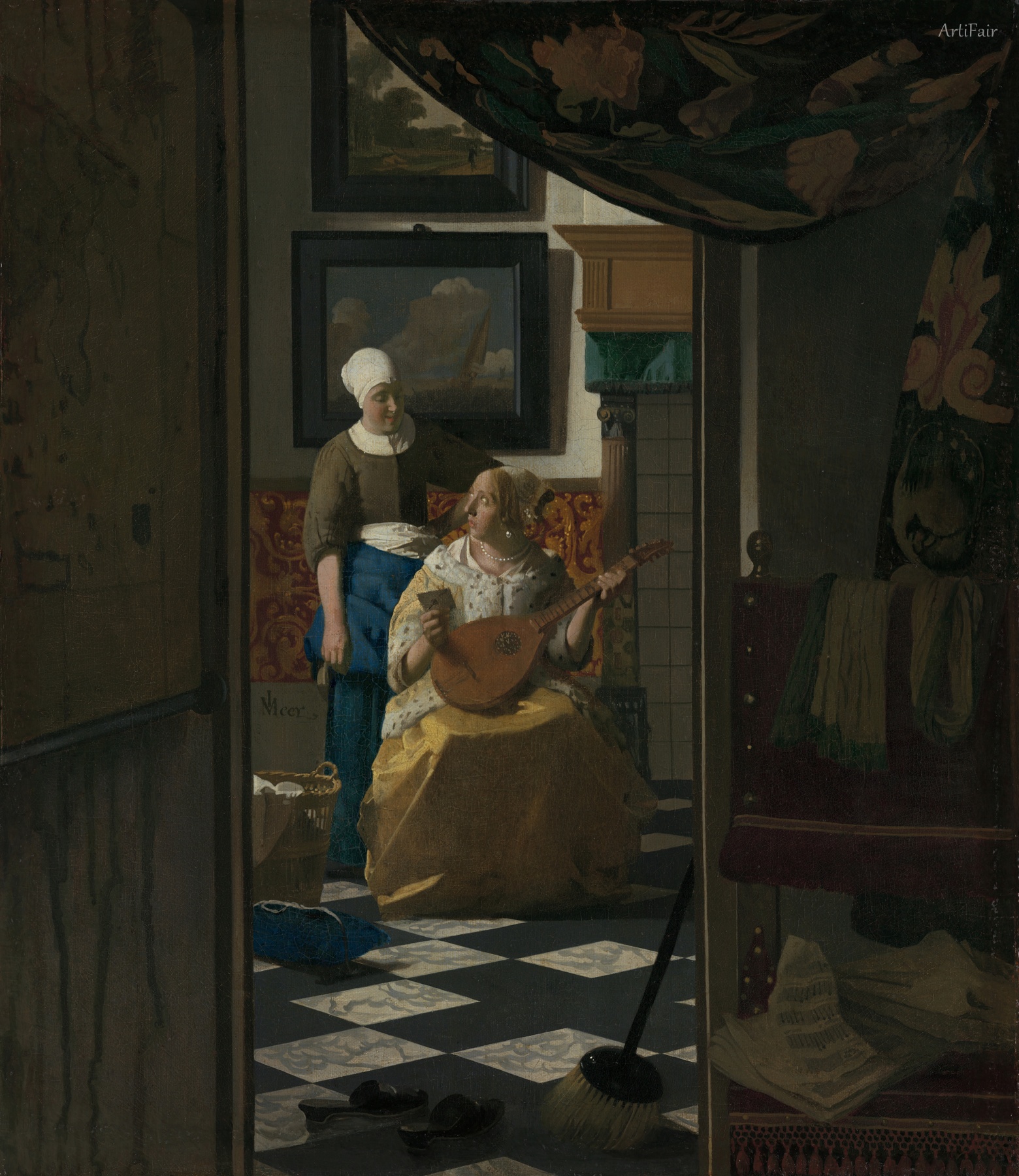
Art Appreciation
In this enchanting scene, a young woman captures our attention, seated gracefully in a golden gown that radiates warmth amidst the cool tones surrounding her. She strums a lute, her fingers poised delicately over the strings, suggesting a moment filled with music and perhaps romantic sentiments. The soft glow of natural light filters through the room, casting intricate patterns on the tiled floor, highlighting the intimate atmosphere. Her expression, a blend of concentration and delight, complements the serene presence of the maid behind her, who watches with a gentle smile, adding a layer of companionship to the tableau. The room is adorned with rich textures and colors—velvet curtains, floral upholstery, and meticulously arranged art hanging on the walls—all inviting the viewer into a cozy, domestic space steeped in artistic tradition.
The interplay of light and shadow here is masterful; each element is accentuated, revealing hidden depths within the layered narrative. The muted color palette contrasts with the vivid details, such as the lute and the fabric patterns, evoking a sense of timelessness. This piece serves not only as a reminder of the genre's storytelling capabilities but also as a reflection of 17th-century Dutch culture, where domestic interiors were often seen as spaces for intimate gatherings and musical pursuits. The juxtaposition of the two women—one creating music, the other providing support—breathes life into this moment, inviting contemplation on themes of love, friendship, and shared experiences.